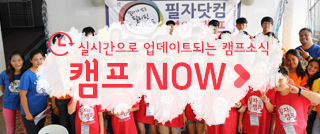
-
МјРЇСІИёСЖШИМі
-
 PASIGARBO SA SUGBO (Festival of Festivals)
PASIGARBO SA SUGBO (Festival of Festivals) 12,603
12,603 -
 Flores De Mayo in the Philippines
Flores De Mayo in the Philippines 12,186
12,186 -
 Ibalong Festival
Ibalong Festival 11,614
11,614 -
 Ati-atihan Festival11,460
Ati-atihan Festival11,460 -
 Gayon Bicol Festival11,313
Gayon Bicol Festival11,313 -
 MAGAYON FESTIVAL11,261
MAGAYON FESTIVAL11,261 -
 CARACOL FESTIVAL10,864
CARACOL FESTIVAL10,864 -
 PINYASAN FESTIVAL in CAMARINES NORTE10,479
PINYASAN FESTIVAL in CAMARINES NORTE10,479 -
 LANZONES FESTIVAL10,403
LANZONES FESTIVAL10,403 -
 Pasigarbo sa Sugbo10,176
Pasigarbo sa Sugbo10,176

Pangalay
The Pangalay is popularly known as the ЁАfingernailЁБ dance among the Tausug and Samal people. The name was derived from the verb mangalay which means 'to dance'. It can also refer to any traditional style of dance performed during social gatherings and festive occasions like weddings. The male and female performers of this dance highlight the articulate postures and hand gestures commonly seen in Sulu and Tawi-Tawi.

Tausug Dance (Pangalay) The Pangalay is popular festival dance in Sulu, it is performed in wedding celebrations among the wealthy families. They may last for several days or even weeks depending on the financial status and agreement of both families. Dancers perform this dance to the music of the kulintangan, gabbang, and agongs during the wedding feast. Pangalay ha Agong is another traditional dance of courtship. Two Tausug warriors vie for the attention of a fair maiden using their agong (large, deep, brass gongs) to show their prowess and skill.

Origin
By nature, the Pangalay is highly considered Asian, with its form and style closely resembling to Balinese and Thai classical dances. It has movements similar to a Southeast Asian martial art, Kuntaw Silat. According to scholars, the dance could have been a remnant of the Samal and Balinese culture for its slow movements are suggestive of the abundance of fish and birds in the Southern part of the Philippines. This traditional dance features dexterous movements of the shoulders, elbows, and wrist joints of the performers ---remarkably viewed as appealing to the male sex.

At a young age, children are taught to master the Pangalay, which serves as a rite of passage. A typical dancer wears Joloano costume and janggay, metal fingernail extensions, on all fingers. There are two popular variations of this dance. The first one is the Samal's Umaral or Igal wherein they use bamboo castanets instead of the janggay. Another variation is called Pangalay Ha Pattong wherein the dancers balance themselves on top of two bamboo poles supported by four men
>

- ЁЄ

- ЁЄSalapan Festival
- ЁЄEmpanada Festival (Batac City)
- ЁЄPADUL-ONG FESTIVAL
- ЁЄKaumahan Festival in Barili
- ЁЄKAGASANGAN FESTIVAL
- ЁЄLalin Festival in Asturias
- ЁЄTinabuay Festival
- ЁЄGayon Bicol Festival
- ЁЄPINYASAN FESTIVAL in CAMARINES
- ЁЄMAGAYON FESTIVAL
- ЁЄBANAUAN FESTIVAL (BARANGAY.GUA
- ЁЄThe Tuna Festival in Gensan
- ЁЄPINTOS FESTIVAL BOGO CITY, CEB
- ЁЄPanaad sa Negros



- ЁЄ

- ЁЄ
- ЁЄCEBU WESTOWN LAGOON
- ЁЄGREEN LAGOON, COMPOSTELA
- ЁЄCALLAO CAVE
- ЁЄMOUNT PINATUBO IN PHILIPPINES
- ЁЄBATAN ISLAND in Batanes.
- ЁЄCALAGUAS ISLAND, CAMARINES NOR
- ЁЄAGHO ISLAND
- ЁЄCARAMOAN ISLAND IN CAMARINES S
- ЁЄSAMBAWAN ISLAND
- ЁЄPLACES TO VISIT IN LANAO DEL N
- ЁЄPLACES TO VISIT IN ZAMBOANGA C
- ЁЄPlaces to visit in Rizal Provi
- ЁЄHISTORIC TOWN OF VIGAN CITY, I













 ЧЪРкДхФФ ОпАЃЛѓДу ПРЧТ
ЧЪРкДхФФ ОпАЃЛѓДу ПРЧТ 12ГтПЌМг МвКёРкИИСЗ 1РЇ
12ГтПЌМг МвКёРкИИСЗ 1РЇ
 ГЛАд ИТДТ ОюЧаПј УЃБт
ГЛАд ИТДТ ОюЧаПј УЃБт
 ИЎОѓ ЧаБГ ЙцЙЎБт
ИЎОѓ ЧаБГ ЙцЙЎБт
 СжИЛПЁ ГЛАЁ ОЕ КёПыРК?
СжИЛПЁ ГЛАЁ ОЕ КёПыРК? УжАэАЁМККё РЬКЅЦЎ СёБтБт
УжАэАЁМККё РЬКЅЦЎ СёБтБт
 ЧіСіПЁМЕЕ ЧЪРкДхФФ!
ЧіСіПЁМЕЕ ЧЪРкДхФФ! ЧіСіПЁМ АЁДЩЧб
ЧіСіПЁМ АЁДЩЧб









 ЧЪРк ЦЏБо Ч§ХУ! ФСНУОюСі МКёНК
ЧЪРк ЦЏБо Ч§ХУ! ФСНУОюСі МКёНК

































